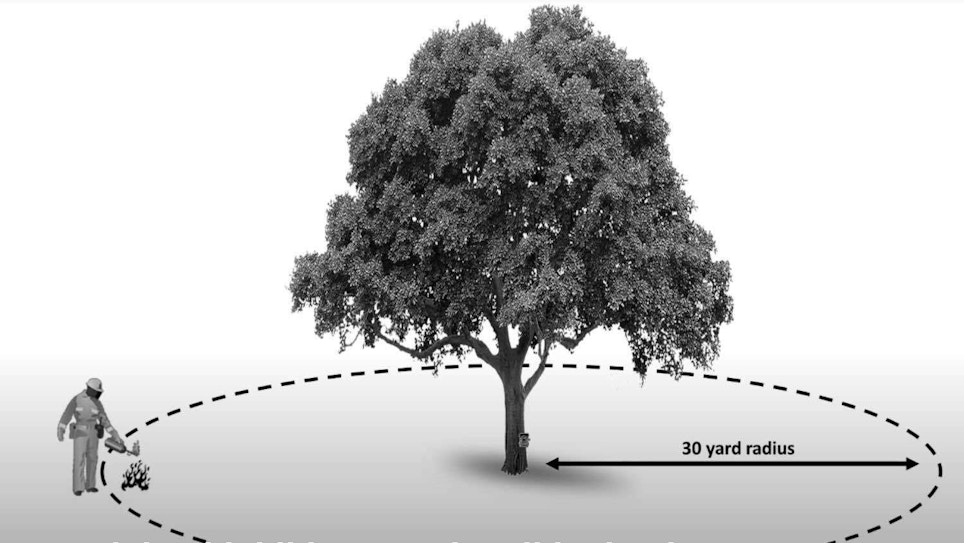Deer scientists at Mississippi State University found a way to achieve 13 times more archery shot opportunities on whitetails around certain stands in a hardwood forest. How did they do it? By using prescribed fire to burn the forest floor in a 30-yard radius around the stands, which improved the quality and attractiveness of understory plants as they regrew in the weeks after the fire. They called it “bow-range burning.”
Prescribed fire is one of the cheapest and best tools you have for improving deer forage and habitat, and it might be a lot easier to accomplish than many people think. Because it is planned and controlled by you, with the guidance of professionals, prescribed fire is slow, safe, easy to manage and won’t harm valuable trees.
The idea is simple: A slow, relatively “cool” fire, creeping through understory vegetation, moving into the wind, consumes old plant material and refreshes forage growth to a highly nutritious and attractive stage. It also stimulates seeds in the soil to germinate, producing new growth as long as there’s enough available sunlight. But because the fire moves slowly and stays at lower temperatures, it rarely damages mature trees as it moves through a forest stand. And you don’t have to burn large areas, as Mississippi State’s research showed.
Though it’s a great technique for deer habitat improvement and hunting attraction, don’t light a match yet. If you’ve never used prescribed fire, you need to prepare yourself and the land first.
- Step No. 1 is visiting the website of your state forestry agency or calling your local wildlife agency biologist. They’ll help you find online resources so you can learn the regulations and recommendations for burning in your area. Many state forestry agencies even provide services such as plowing firebreaks, helping you choose the best day to burn, or even sending professionals to assist you on the day of work.
- For your first effort, select a small area where you can gain experience. You’ll need clean firebreaks, whether natural such as large streams, or created by you such as plowed strips of clean dirt, surrounding the area you want to burn. As you’ll see in the video below, Mississippi State used backpack leaf-blowers to create circular firebreaks around stands.
- You’ll need the correct weather conditions and season for a safe burn (winter and early spring are the traditional best times). It’s smart to have a few friends with you to help manage and control the fire, preferably ones who have experience.
Once you’ve implemented your first fire, you’ll see that it’s easy – and even fun –when you burn under the right conditions with the right planning and preparation.
Important reminder: While prescribed fire can be conducted safely and effectively, it should only be done so with the guidance of a trained professional.
For more tips and techniques on prescribed fire from the National Deer Association, click here.






